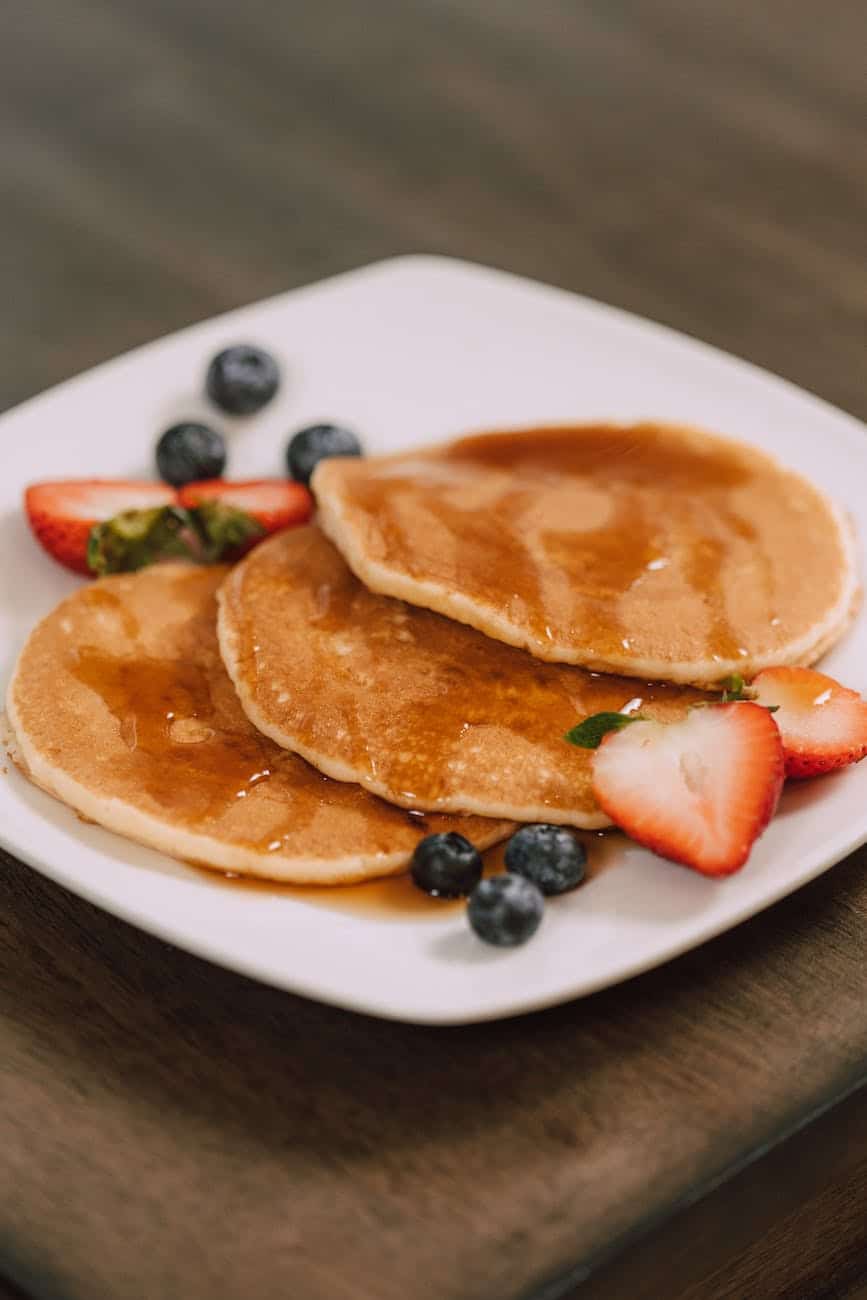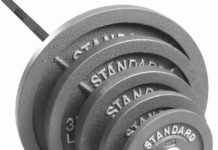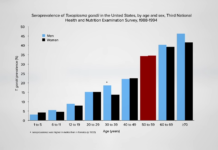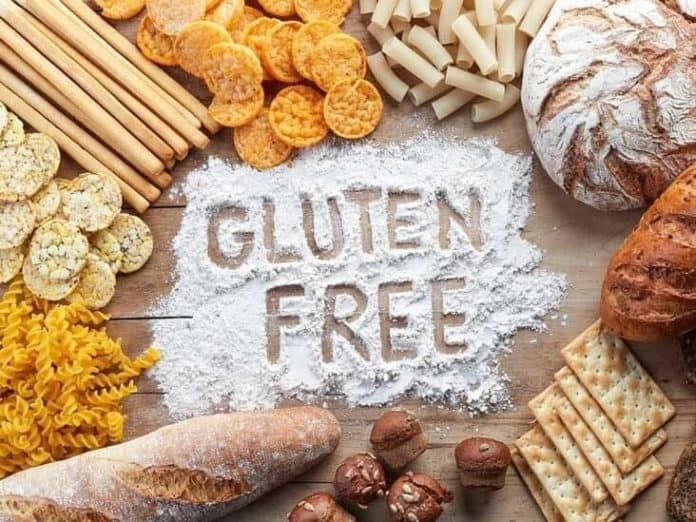Table of Contents
Gluten is a protein found in wheat, barley, rye, and some other grains. People with gluten-sensitivity, celiac disease, or other medical conditions may need to follow a gluten-free diet for health reasons. A gluten-free diet eliminates all foods that contain gluten.
With a gluten-free diet, you can still eat a variety of delicious and nutritious foods. By eliminating gluten, you eliminate many processed or unhealthy snacks like chips and cookies. This means you will have more room in your diet for healthy fruits, vegetables, lean proteins, and dairy.
Gluten-free diets can provide many health benefits, including improved digestion, increased energy levels, reduced inflammation, and improved mental clarity. Following a gluten-free diet requires careful monitoring of what you eat, and it can be challenging to keep track of which foods contain gluten and which don’t.
What is Gluten and why a Gluten-Free Diet?
Gluten is a protein found in many grains such as wheat, rye, barley, and oats. It is responsible for giving breads and other goods their structure and texture. For some individuals, having gluten in their diet can cause health issues. This leads them to adopt a gluten-free diet – avoiding all gluten containing foods.
A gluten-free diet can be beneficial to those with a gluten sensitivity or an autoimmune disorder such as celiac disease. Symptoms associated with these conditions can be reduced by eliminating gluten from the diet. Adopting a gluten-free lifestyle can also help reduce inflammation, improve digestion, boost energy levels, and even improve mood.
Overall, a gluten-free diet can help improve the quality of life for those who have difficulty tolerating gluten.
What are the Key Principles of a Gluten-Free Diet?
Following a gluten-free diet means avoiding all foods that contain gluten. Gluten is a protein found in wheat, rye and barley. It's important to note that just because something is labeled “gluten-free”, it does not mean that it is necessarily free from gluten. Products may be naturally gluten-free, but have been processed in a facility shared with products containing gluten, so it is essential to read labels thoroughly.
The key principles to following a Gluten-Free diet include:
- Avoiding gluten-containing grains such as wheat, barley and rye. This includes bread, pasta, crackers, cookies and other baked goods.
- Avoiding processed foods made with gluten-containing ingredients.
- Being aware of hidden sources of gluten such as soy sauce, some salad dressings, deli meats and beer.
- Choosing only naturally gluten-free grains such as quinoa, buckwheat and oats (make sure to check for cross contamination).
- Reading food labels carefully, as gluten can be hidden under many different names.
Following these key principles can help ensure that you maintain a balanced and healthy gluten-free diet.
Gluten-Free Diet Approved Food Lists
If you plan to switch to a Gluten-Free Diet, there are some dos and don’ts you need to be aware of. The most important one is to avoid any food that contains ingredients made from wheat, rye, and barley as these contain gluten. It is important for people who follow this diet to read food labels carefully and to double check the ingredients list to ensure it is gluten-free. Furthermore, you should learn to identify foods that may have been contaminated by coming into contact with gluten-containing products during storage and preparation.
In general, people on a gluten-free diet should focus on consuming the following:
- Fresh fruits and vegetables
- Fruits like cantaloupe, pineapple, mango and blueberries or vegetables such as carrots, tomatoes, celery and kale
- Legumes like chickpeas, black beans and lentils
- Nuts and seeds like almonds, walnuts and flaxseed
- Eggs, lean meats and fish
- Gluten-free grains such as quinoa, buckwheat, brown rice, amaranth and millet
- Dairy products such as milk, cheese and yogurt
On the other hand, it is best to stay away from the following gluten-containing foods and ingredients:
- All types of wheat, including spelt, semolina, bulgur, durum, couscous, kamut, and triticale
- Rye
- Barley
- Malt extract
- Beer
- Breads and pastas
- Flavored coffees and teas
- Processed meats
- Soy sauce and teriyaki sauce
Finally, it is important to note that some other food items, like sauces and condiments, may also contain traces of gluten and should be avoided. All in all, if you want to maintain a healthy, gluten-free diet, make sure to pay attention to what ingredients are used in the food you consume.
https://www.pinterest.com/pin/1097682109184316228/Understanding Food Labels and Ingredients that May Contain Gluten
When you have a gluten-free diet, it is essential to understand the food labels as well as the ingredients that may contain gluten. Gluten is a protein found in wheat, barley, and rye, and some food labels may not indicate this clearly. As a guide, here are tips for recognizing what ingredients contain gluten:
- Look for wheat, barley, and rye on the “Contains” list of a food label.
- Watch out for hydrolyzed wheat protein, which is often used as an additive in processed foods, such as soups, sauces, and more.
- Be aware of hidden sources of gluten, such as malt and modified food starch. These may be found in processed foods, deli meats, and candy.
It is also important to look out for seasonings, seasonings mixes, and natural and artificial flavorings, as they may contain wheat. Furthermore, food products containing oats could include wheat, barley, or rye, so look for certified gluten-free oats.
How to Identify Gluten Free Foods
Learning how to read food labels is an important skill when it comes to following a Gluten-Free diet. It helps you easily identify ingredients that contain gluten, even if it isn’t listed in the product name. Using food labels to your advantage is key for knowing which items are off limits in terms of gluten consumption.
First, search for certain warning words like “wheat” or “rye”, these clearly indicate that the product contains gluten. Additionally, be sure to check the allergen statement, as this will alert you to any potential gluten containing ingredients in the product.
Some other ingredients that may contain gluten include: barley, malt, brewer’s yeast, farro, spelt, kamut, bulgur, semolina, triticale, and oats. However, not all of these are necessarily considered gluten-containing ingredients; some companies may offer gluten-free options of these products.
When you’re at the store, take a few extra minutes to review the labels of each item. Even if you’ve purchased a product before, manufacturers may change their ingredients from time to time, so it’s important to always double-check.
Shopping for Grocery Products
Shopping for grocery products on a gluten-free diet may seem intimidating, but with the right information and resources, it doesn’t have to be! Start by reading labels carefully. Look specifically for ingredients that contain wheat, triticale, barley, or rye. If these ingredients are present then the product is not considered to be gluten-free.
Look for products that have been specifically labeled as “gluten-free”. Be aware that just because a product does not have wheat, barley, rye, or triticale listed on the ingredients list does not mean that it is free from gluten. Some products have gluten-containing ingredients that are not always easy to identify, so make sure you check the label carefully.
There are many stores that specialize in gluten-free items. Look online to find out which stores are near you. You can also look for gluten-free items in local health food stores or organic markets. Many supermarkets now carry a variety of gluten-free items, so check your local store to see what options are available.
When shopping online, make sure to check the reviews of products to ensure that they are gluten-free. Finally, get creative with your recipes by using substitute ingredients such as almond or coconut flour for wheat flour.
Tips on Shopping for Grocery Products
Shopping for gluten-free products can be challenging, especially if you are new to the gluten-free lifestyle. It is important to pay attention to food labels and ingredients, as some foods that do not contain wheat or grain may still contain gluten. Here are some helpful tips to make shopping for gluten-free items easier.
- Check the grocery store for dedicated sections for gluten-free items
- When selecting items, pay close attention to what ingredients are listed on the product label, and look for foods that are naturally gluten-free, such as fruits, vegetables, dairy, and meats
- Look for online stores that specialize in gluten-free products
- Always double-check packaging for allergens to make sure there is no gluten-containing ingredients
- If you have any doubts about a certain product, do not hesitate to contact the manufacturer directly with any inquiries
By taking the time to become familiar with food labels and ingredients, it can be easier to shop for gluten-free items. Additionally, taking advantage of online resources can help you locate alternative stores and products that will allow you to enjoy a wide variety of delicious options.
Gluten-Free Cooking Techniques
A gluten-free diet requires some adjustments to the traditional methods of cooking, as well as a shift in the nutritional balance of one’s diet. It is important to understand the food ingredients you are using in order to ensure that you do not include any products containing gluten. Additionally, there are several techniques and tips you can employ when preparing a meal to help make sure it is gluten-free.
When cooking gluten-free dishes, it is important to choose ingredients that are naturally gluten-free. These would include fruits, vegetables, beans, legumes, nuts, fish, poultry and lean meats. When selecting packaged items, be sure to read labels carefully for any hidden sources of gluten, such as malt flavoring or hydrolyzed vegetable proteins. Avoid wheat, rye, barley and oats. Rice, quinoa, millet and buckwheat are all viable alternatives to avoid gluten in meals.
Preparing gluten-free foods can be easy and delicious. While you should avoid ingredients that contain gluten, there are many grain alternatives that won’t disrupt your diet. When cooking, focus on whole grains such as millet, quinoa, oats, rice, and buckwheat, as well as fresh vegetables, fruits, beans, nuts, and seeds.
When baking, replace wheat flour with alternative flours such as almond flour, coconut flour, or oat flour. To make these flours more nutrient-rich, add a combination of quinoa flour, arrowroot starch, guar gum, and xantham gum. Also, skip processed snacks and opt for natural foods such as plain popcorn, fresh fruit, and hard-boiled eggs.
It is essential to understand the types of nutrition your body needs when following a gluten-free diet. Protein is an important part of any diet and is important for cell growth and maintenance. Some excellent sources of protein include poultry, fish, beans, and legumes. Healthy fats are also necessary to balance hormone levels and provide a sense of fullness. Food such as avocados, ghee, and oily fish are all great sources of healthy fats.
To maintain a proper balance between good carbs and bad carbs, eat more complex carbohydrates found in foods such as sweet potatoes, squash, and wild rice. Complex carbs help provide sustained energy and also assist with keeping your body’s blood sugar levels steady. Lastly, fiber is important for digestive health and should be consumed in moderation. Some high-fiber foods include chia seeds, quinoa, and dark leafy greens.
Gluten-Free Diet and Nutrition
Although gluten-free diets are typically lacking in certain essential vitamins and minerals, there are a number of simple solutions to this deficiency. Iron and Vitamin B12 can typically be found in fortified breakfast cereals and whole-grain rice, while other B vitamins can be found in eggs, bananas, green leafy vegetables, potatoes, and legumes. Calcium is found in dairy products, almonds, calcium-fortified fruit juices, and canned fish. Lastly, zinc can be found in peanuts, lentils, cashews, and peas, among other sources.
It is also beneficial to avoid cross-contamination with any gluten-containing products. Have separate utensils and cutting boards for gluten-containing and gluten-free foods, as well as separate areas for cooking and storing ingredients.
In following a gluten-free diet, there may be some limitations in terms of the range of food choices; however, with the right information and care, these impediments can be overcome. With a bit of practice, creativity, and resourcefulness it is possible to create delicious meals that are both healthy and gluten-free.
Health Benefits of a Gluten-Free Diet
Making the switch to a gluten-free diet can have an array of positive effects on your health. Firstly, it can help reduce digestive issues such as cramps, bloating, nausea, constipation, gas, and diarrhea. It may also help improve energy levels and overall wellbeing.
Additionally, some people also report that a gluten-free diet helps with skin conditions such as eczema and psoriasis.
Also, research suggests that following a gluten-free diet may be beneficial for reducing the risk of certain neurological disorders such as Alzheimer’s, Parkinson’s, autism, and depression. There is even evidence that following a gluten-free diet can help improve overall health and increase energy levels.
For those looking to lose weight, following a gluten-free diet can be beneficial, as processed gluten-containing products tend to be higher in calories. Eliminating these items from your diet can help reduce your calorie intake and assist in weight loss. Furthermore, many gluten-containing foods tend to be higher in sugar, which can lead to weight gain and be detrimental to your health. By cutting out gluten, you can reduce your sugar intake and maintain a healthier lifestyle.
Surprisingly, some people with gluten sensitivities report that eliminating gluten from their diet helps with depression, anxiety, and other mental health issues.
In addition to these direct benefits, there are also numerous indirect benefits associated with a gluten-free lifestyle. People with gluten intolerances are often more mindful of what they put into their bodies. As such, they are more likely to seek out healthier foods that are made from high quality ingredients and devoid of unhealthy additives. Eating this way can help reduce the risk of many diseases associated with poor nutrition.
Finally, those on a gluten-free diet may be more aware of the potential dangers of consuming genetically modified foods, which are widely used in conventional agriculture. By avoiding products made with such ingredients, you can help protect the environment by supporting farmers who use sustainable practices.
Finding Alternatives to Gluten-Filled Foods
When living a gluten-free lifestyle, it is important to identify alternatives for foods that may contain gluten. Gluten can be found in several grains like wheat, barley, and rye. It is also hidden in processed foods such as sauces, soups, and seasonings.
Some great substitutions for gluten-filled grains include quinoa, millet, buckwheat, rice, sorghum, and oats (as long as they have not been cross-contaminated). Additionally, you can replace processed foods with naturally gluten-free products like coconut aminos, tapioca flour, and arrowroot powder. It's also helpful to look for the ‘gluten-free' label when selecting any packaged items.
Using plant-based proteins is another great way to switch up your diet without having to worry about consuming gluten. Certain types of beans, nuts, and seeds are naturally gluten-free and can give your meals an extra boost of protein. Some popular options include edamame, lentils, hemp seeds, and chia seeds.
You can also find a variety of gluten-free breads, cereals, pastas, and snacks in most grocery stores. Expand your horizons by trying out different types of grains such as teff or amaranth, as they will add flavor and texture to your dishes.
With a few simple adjustments to your diet, you will soon adapt to the gluten-free lifestyle. There are plenty of delicious foods available to enjoy and explore, so don’t let gluten stop you from having a balanced and nutritious diet.
Popular Substitutions to Gluten-Filled Foods
Here are some popular substitutes you can use when creating gluten-free recipes:
- Pseudograins like quinoa, amaranth, and buckwheat instead of wheat-based grains like bulgur wheat, couscous, and farro.
- Coconut flour or almond flour instead of all-purpose flour.
- Gluten-free oats instead of regular oats.
- Cornstarch instead of wheat flour.
- Gluten-free pasta instead of regular pasta.
- Substitute rice for barley or rye.
- Cornbread or corn tortillas instead of wheat-based breads or tortillas.
By making these simple switches, you can incorporate all the same flavors you are used to into your new gluten-free kitchen with ease.
Recipes for common meals
A gluten-free diet does not have to be daunting or boring. With a bit of creativity and practice, you can create delicious, nutritious meals that also happen to be gluten-free. To get started, try out some of these delicious recipes.

Breakfast Recipes
- Gluten-Free French Toast: Replace the wheat bread with gluten-free bread and use coconut milk or almond milk instead of traditional cow's milk.
- Quinoa Breakfast Bowl: Cook up a batch of quinoa and add in your favorite fresh or frozen fruits along with a spoonful of nut butter.
- Smoothie Bowl: Start with a base of coconut milk or almond milk and add in your favorite fruits and vegetables. Top with crunchy gluten-free granola for extra texture.
Lunch Recipes
- Gluten-Free Salad Wrap: Swap out regular wraps for gluten-free wraps filled with your favorite vegetables and proteins.
- Veggie Bowl: Create a bowl with roasted veggies, quinoa, and grilled chicken to make a simple and healthy meal.
- Taco Salad: Load up a bed of lettuce with tomatoes, black beans, corn, cheese, and your favorite gluten-free taco seasoning.
Dinner Recipes
- Gluten-Free Pizza: Use a gluten-free pizza crust and top with your favorite pizza toppings.
- Cauliflower Fettuccine Alfredo: Replace the regular fettuccine with gluten-free cauliflower noodles and enjoy a creamy Alfredo sauce without any gluten.
- Stuffed Peppers: Fill bell peppers with a mixture of brown rice, black beans, and vegetables for a healthy and versatile dinner.
Snack Recipes
- Rice Cakes: Spread your favorite nut butter on a rice cake for a quick snack.
- Fruit and Nut Bars: Make homemade vegan and gluten-free bars by combining nut butter, oats, and your favorite dried fruits.
- Fruit and Vegetable Smoothie: Blend together some almond milk, your favorite fruits and veggies, and a scoop of protein powder for a filling snack.
Gluten-Free Recipes for Different Meals
A gluten-free diet has many benefits and avoiding certain ingredients can make a huge difference in your health. In order to help you follow a gluten-free lifestyle, here are some recipes for each meal of the day! Breakfast, lunch, dinner, and even snacks can be crafted in a way that’s entirely gluten free.
Breakfast Ideas
When it comes to breakfast, there are plenty of delicious gluten-free options. Start your mornings with fluffy gluten-free pancakes drizzled in syrup, or a classic omelet. Alternatively, you could enjoy a smoothie bowl topped with gluten-free granola and fresh fruit.
- Gluten-Free Pancakes
- Omelet
- Smoothie Bowl
Lunch and Dinner Options
When it comes to lunch and dinner, there’s an abundance of options for a tasty gluten-free meal. Whether you’re making a family dinner or looking for something quick and easy, there’s a gluten-free dish for everyone. Enjoy grilled chicken with roasted vegetables, a hearty salad topped with salmon, or a simple stir fry.
- Grilled Chicken & Roasted Vegetables
- Salad with Salmon
- Stir Fry
Snack Time
Snacking doesn’t have to mean compromising on your gluten-free diet. There are plenty of tasty and healthy options to tide you over until your next meal. Enjoy a glass of strawberry smoothie, or a handful of nuts and seeds. You could even craft your own trail mix using gluten-free ingredients such as almonds, dried cranberries, pumpkin seeds and shredded coconut.
- Strawberry Smoothie
- Nuts & Seeds
- Trail Mix
Wrapping Up
With a gluten-free diet comes an abundance of health benefits, both physical and mental. The key to following a successful gluten-free lifestyle is to be mindful and informed when shopping for and eating food. Understanding labels, ingredients and meal prepping tips will equip you with the right tools to make managing a gluten-free diet easier and enjoyable.
The lifestyle can offer many benefits, both physically and emotionally. Adopting a gluten-free diet is a big change and one that requires commitment, but you can find success with the right information and resources to support your journey. With time and patience, you can transition to this kind of diet and continue to enjoy eating your favorite foods, just in a gluten-free way. This guide is meant to provide you with a starting point to discover which nutritional options are available to you and to help make your eating experience more enjoyable and beneficial.
Additional Resources
If you’d like to learn more about the health benefits of eating gluten-free, there are many resources available. The Celiac Disease Foundation website provides additional information on gluten-free cooking, recipes, and tips for living a healthier lifestyle. The Academy of Nutrition and Dietetics also has a gluten-free fact sheet with more detailed information and dietary guidelines. Finally, there are many health blogs available with helpful advice for transitioning to a gluten-free diet.
Although there are foods that contain gluten, there are also many alternatives available to replace them. With careful research and proper prepping, a gluten-free diet can offer plenty of options and flavors. Experimenting with different recipes and techniques can help you find the right solution to fit your dietary needs.
For further information on a gluten-free diet, including nutritional facts and recipes, check out the following resources:
- The Complete Gluten-Free Diet Guide (www.webmd.com/diet/gluten-free-diet#1)
- Gluten-Free Substitutions (www.thespruceeats.com/gluten-free-substitutions-3377848)
- Gluten Free Basics (www.mayoclinic.org/healthy-lifestyle/nutrition-and-healthy-eating/in-depth/gluten-free-diet/art-20048530)
Ultimately, a gluten-free diet can positively impact your overall health if done properly. Following a gluten-free diet can be simple and manageable if you have the right knowledge. We hope that this guide was beneficial in providing you with more information to start your journey.
Common Questions about Gluten-Free Diet
What is gluten?
Gluten is a type of protein found in wheat, rye, barley, and other grains. It causes an adverse immune system reaction in some people when consumed, and so a gluten-free diet eliminates these specific grains from the diet.
What are the key principles to following a Gluten-Free diet?
The most important principle is to avoid all foods that contain wheat, rye, or barley. Additionally, it’s important to read labels carefully to ensure there are no traces of gluten in any foods consumed, such as sauces, marinades, condiments, and processed foods.
How can I identify different types of food labels for Gluten?
To identify different types of food labels for Gluten, look for labels that mention that a food is “gluten-free”, “no gluten”, “contains wheat”, or lists ingredients like wheat flour, barley, rye.
Where should I shop for Gluten-Free grocery products?
You can shop for Gluten-Free grocery products at many natural health stores, supermarkets, health-food stores, and online retailers.
What are some beneficial cooking techniques for preparing Gluten-Free meals?
When cooking Gluten-Free meals, it’s important to stick to simple recipes without too many ingredients. Some helpful techniques include using freshly prepared ingredients, avoiding cross-contamination with ingredients containing gluten, and cooking in separate cookware and utensils.
What are the health benefits associated with a gluten-free lifestyle?
A Gluten-Free lifestyle can reduce gastrointestinal discomfort, aid digestion, and improve overall health for those with celiac disease, gluten sensitivity, or a gluten intolerance.
What are some alternatives to gluten-filled foods?
Alternatives to gluten-filled foods include quinoa, buckwheat, amaranth, millet, rice, polenta, and oats (if labeled as gluten-free).
















